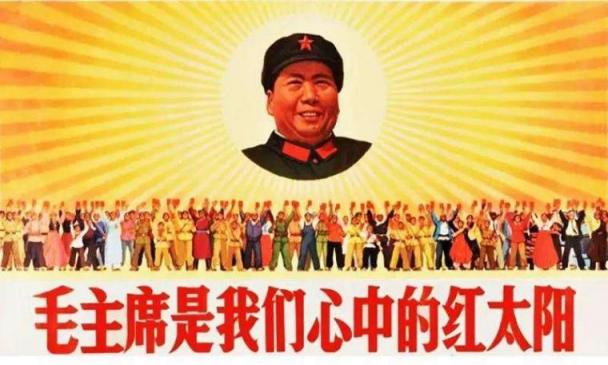
2010年10月天津气候谈判期间, 清华大学的汪晖教授和社科院郑易生研究员领衔一些国内的学者和组织递交了两封对中美政府的公开信。主题是要求美国拿出实际行动来,而不是以中国做借口,掩盖其在气候问题上的不作为;对中国肯定成绩的同时提一些建设性意见。在对美公开信的结尾,他们对美国提出挑战"我们呼吁美国在今后的五年中,在可再生能源方面实现中国在过去五年中的增长率:风能发电新装机总量逐年翻番,太阳能方面也实现和中国类似的高增长。美国有非常多的科技和选择,而作为世界最富裕的国家,它至少应该做出与中国相当的努力, 并比中国做得多。以上提出的挑战就是我们对美国政府的呼吁。"
五年时间过去了, 让我们来盘点一下美国做得如何,并和中国做出对比。
美国风能装机容量2010年为40180兆瓦, 2014年为65897兆瓦,年增长率为13.2%。 美国太阳能光电装机容量2010年为2037兆瓦,2014年为18305兆瓦,年增长率为73.1%。 中国2014年底并网风电装机达到95810 兆瓦(是2005 年的90 倍),2005年至2014年间年增长率为64.5%。 2014年底光伏装机达到28050 瓦兆(是2005 年的400 倍),2005年至2014年间年增长率为94.6%。 无论风能还是太阳能,美国的年增长率都低于中国, 而且总装机容量也低于中国。美国做为全球第一经济大国,国土面积也超过中国(所以物理限制并不是美国落后的借口),这就是奥巴马总统所说的领导全球应对气候变化?
短短十年间, 中国迅速成为全球可再生能源装机容量第一大国,体现了中国对能源转型的决心和践行。 而美国, 尽管奥巴马总统和克里国务卿都称积极应对气候问题是他们希望留下的政治遗产,其实际行动不是不让人失望的。 印度NGO 科学和环境中心(Centre for Science and Environment) 研究员Chandra Bhushan 评论说, 对比美国和印度提交的国家自主减排计划, 到2030年印度将有更多能源来自于可再生能源:美国2030年仅有约15%的能源来自于可再生能源, 而印度将有约30% 的能源来自于可再生能源。 美国已经落后于中国,按照现在的趋势下去,还将落后于印度,真是情何以堪? 美国,到了少说多做的时候了,引用一句美国的俗语致奥巴马总统 "please talk the talk, walk the walk"。
中国人民大学重阳金融研究院客座研究员 文佳筠
---------------------
2010年对美国公开信的详细内容如下:
"应对气候变化,美国是否能与中国做出相当的努力?"
致美国气候特使Todd Stern的公开信
我 们,以下署名的中国的个人和组织,在联合国气候变化谈判即将于10月4号在中国天津举行之际,特此发表致美国气候变化特使Todd Stern的公开信,并希望通过他将我们的诉求传达给美国政府。我们呼吁:美国应停止利用中国来转移视线,以避免全世界对其国内种种失败的关注。应对气候 变化,美国至少要做出与中国相当的努力,而不是继续利用中国作其不行动的借口。
美国呼吁建立一个对其本国,中国,以及其他大型发展中国家"对等"的国际协议。一些美国舆论表示中国应该率先减排。我们认为这些说法严重违背了在应对气候变化问题上共同但有区别的责任的原则,更加不符合事实情况。
中 国近年来经济迅猛发展。但是,从根本上来说它仍然是一个发展中国家。超过百分之四十人口的卫生条件仍然没有提高,百分之十八农村人口的饮用水源没有得到改 善。然而,中国并没有回避其应对气候变化的责任。事实上,与它们对气候变化的责任相比,中国的所做出的努力已经远远超过了美国。
1、美国依然是对导致气候变化负有最大责任的国家。以其不足世界5%的人口,美国在1850年到2006年间的累计碳排放占到了导致气候变化的全球碳排放总和的29%。而中国的人口占到了全球的20%-22%,同时期的累计碳排放仅仅是全球总量的8.62%。
2、 根据2008年的数据,一个平均美国公民的年均碳排放(19.2公吨),仍然是一个普通中国人的(4.9公吨)近四倍。
3、2007年中国已经建立了一整套全面的应对气候变化国家方案。美国仍然没有建立针对气候变化的国家立法。
4、中国的机动车燃油效率标准与美国相比更加严格。双方具体标准分别是,中国:34英里/升,美国:27英里/升。
5、中国对清洁能源的投入远远超过美国。2009年,中国投资清洁能源346亿美元,占到GDP的0.39%。然而美国的同类投资只有186亿美元,占到其GDP的0.13%。
6、在过去的五年中,中国关闭了上千家高能耗低效率的小火电,小钢铁企业。同时,中国风能发电机组每年新装机容量逐年翻番;太阳能电池板的生产量及新装机容量每年分别增长240% 与37%。相比之下,美国的可再生能源的增长率远远低于中国的水平。
7、 中国承诺到2020年的单位GDP二氧化碳排放比2005年下降40%~45%。美国承诺到2020年的碳排放比2005年下降17%。根据联合国气候变 化框架公约秘书处的分析和计算,中国的承诺大概等同到2020年减排25 亿吨二氧化碳,大约是美国承诺的三倍(8亿吨)。
我们承认中国不完美,也许它永远也不可能完美。在另外一封致中国气候变化特别代表谢振华的信中,我们讨论了中国政府和人民应该并且能够如何更好的应对包括了气候变化在内一系列可持续发展问题。
但 是这里我们需要强调的是,中国不是,也绝不能继续被美国用来当作其不作为的借口。尤其是中国已经做出了巨大的努力。而美国,作为全球最富有的国家,作为对 导致气候变化负有最大历史责任的国家,必须履行其在联合国气候变化公约以及巴厘路线图框架下的义务。我们呼吁美国尊重联合国进程,并且做出其应有的贡献, 而不是破坏弱化联合国进程,并成为附件一国家的挡箭牌。
尽管按照奥巴马总统的说法,美国要积极参与应对气候变化,它依然是附件一国家中唯一没有签署京都议定书的国家。美国没有能够建立有效应对气候变化的国家立法。它承诺的减排量相当无力: 到2020年仅仅比1990年减排3%-4%。更有甚者,在美国国内的失败受到越来越多国际社会关注的时候,它还试图通过聚焦中国来转移大众视线。尽管, 如上面的数据所示,美国多方面减排的努力都落后于中国。
然而,不要说向中国看齐,美国 还非常有可能破坏中国的努力。 九月九日,美国联合钢铁工人工会向美国贸易代表办公室提交了请愿书,控诉中国非法补贴其清洁能源产业,要求美国政府在世界贸易组织对中国提起诉讼。此事件 不禁让人怀疑,现行的世贸组织条例是否过度限制了发展中国家为公共利益采取行动的能力?在这个案例中,中国政府为应对气候变化实施的政策受到了攻击。
美 国在谴责中国碳排放量不断上升的同时,还攻击中国为摆脱对化石能源的过度依赖而大力发展可再生清洁能源,这是相当讽刺的。利用国际贸易系统来相互指责,甚 至试图颠覆别国应对气候变化的政策措施只能让我们走向倒退。 我们需要的是合作与良性竞争,一场积极向上的,面向未来的赛跑。
作为中国的非政府组织和个人,我们并不孤单。在一份名为"美国应是什么角色?-给全球其他国家的问题"的非政府组织联合分析中,世界各地的公民社会组织纷纷表达了他们对美国口头承诺与现实行动差距越拉越大的担忧。
他们说:
在巴厘,多方要求美国:要么领军,要么退出。如果美国要真正的发挥领导作用,必须改变其现行的思维方式:美国必须承认自己没有能力领军,至少不是现在。与为取悦于国内人民而强行冒充领导相比,建立全球框架和提高全球应对气候变化力度的任务要重要的多。
在最近的一次媒体通讯中,一个美国知名环保组织说:
很明显在这个时候国内政治不会允许美国在全球应对气候变化行动中发挥领导作用。奥巴马政府必须停止其假意领军的做秀行为。现在全人类面临的气候变化危机要求所有发达国家提高其应对力度,而美国低减排承诺和目前的行为只会让其他国家向其低水平看齐,必须立即停止。
我 们认同来自世界公民社会这样的声音。是时候要求美国停止利用中国作借口,切实的做出任何他们可以承诺的行动了。因此,在这里我们向美国提出挑战。我们呼吁 美国在今后的五年中,在可再生能源方面实现中国在过去五年中的增长率:风能发电新装机总量逐年翻番,太阳能方面也实现和中国类似的高增长。美国有非常多的 科技和选择,而作为世界最富裕的国家,它至少应该做出与中国相当的努力, 并比中国做得多。以上提出的挑战就是我们对美国政府的呼吁。
汪晖教授,清华大学
郑易生研究员,中国社科院
于晓刚博士
张海滨教授,北京大学
贺雪峰教授,华中科技大学
林春教授,伦敦政经学院
强世功教授,北京大学
董叙霖博士,联合国退休人员
李立,中国青年应对气候变化行动网络
梁帆博士
徐向阳教授, 中国矿业大学
马军,公众环境研究中心
绿色流域
绿色浙江
杭州市生态文化协会
北京山水自然保护中心
绿色江河
绿色和平,中国
Prominent Chinese Academic Reissues Climate Challenge to the U.S.
--Interview with Prof. Wang Hui
Dale Jiajun Wen
International Forum on Globalization
5 year's ago in October 2010, during the UNFCCC intersessional negotiation in Tianjing China, a group of Chinese academics and civil society groups issued an open letter titled "A Challenge for the U.S. To Match China's Efforts to Address Climate Change" to the US special envoy on climate change (a copy of the letter can be found here). They issued a challenge to the US government, "It is time for the United States to stop using China as a scapegoat, and to move forward with whatever honest efforts it can come up with. Here we wish to offer the following challenge. We call on the United States to deliver in the next five years, the growth in renewable energy production which China brought into being in the last five years: : double newly-installed wind capacity every year, match the high growth rate for solar as well. The United States has many technologies and options at its disposal and given its status as the world's richest nation, it should at least match China's efforts, and do much more. The aforementioned challenge, therefore, is our call to the US Government."
Now five years have passed, how has the US fared to meet the challenge? With this question, I interviewed Prof. Wang Hui, one of the initiators of the letter and who recently reissued the challenge. He is Chinese language and history professor at Tsinghua University, and the US magazine Foreign Policy named him as one of the top 100 public intellectuals in the world in May 2008.
We started with the data, comparing the growth rate of renewables in China and the US. The facts are indisputable, the US has failed the challenge.
For installed wind capacity, US was at 40.180 GW by 2010 and 65.897 MW by 2014, with an average annual growth rate of 13.2% in the last four years. The installed capacity of wind power in China reached 95. 81 gigawatts in 2014, 90 times of that for 2005, with an annual growth rate of 64.5%. For installed solar PV capacity, US was at 2.037 GW by 2010 and 18.305 GW by 2014, with an average annual growth rate of 73.1%. This is more impressive, but still lags behind China. The installed capacity of solar power in China reached 28.05 gigawatts in 2014, 400 times of that for 2005, with an annual growth rate of 94.6%. A slightly different time line was used for the comparison, 2010-2014 for the US as 2010 was the year the challenge was issued, 2005-2014 for China as the the decade long data can better reflect long term trend. A direct comparison as initially formulated in the challenge would put the US at an even bigger disadvantage: for example, between 2005-2010, the wind capacity growth rate in China was more than 100%.
The United States is economically and technically more advanced than China, its land area is also larger than China. So there is no excuse for the US to lag behind China for renewable deployment, but unfortunately it does. Prof. Wang Hui commented that even though President Obama and Secretary of State John Kerry claimed that they want to leave addressing climate change as their political legacy, the United Staes has not delivered so far despite of their beautiful rhetoric.
We also discussed the recent events in the ongoing UNFCCC negotiations. 185 countries have already submitted INDCs (intended nationally determined contributions), which cover about 94% of global emissions. So it is hopeful that we will reach a constructive agreement in Paris, which will be a starting point. But it is only a starting point because the INDCs do not add up to keep temperature rise below 2 degrees above preindustrial levels. According to a civil society equity review by more than a dozen NGOs as well as social movements, including Friends of Earth, Oxfam, Action Aid, WWF, Third World Network, Jubilee South and Panafrica Climate Justice Alliance, the pledges of most developed countries fall far short of their "fair share" of emissions cuts based on how much they've polluted historically and their financial capacity to mitigate. For example, the US INDC represents about a fifth of its fair share. The majority of developing countries including India and China have made mitigation pledges that exceed or broadly meet their fair share, though they also have mitigation potential that exceeds their pledges and fair share, which can and should be unlocked with international support - for the world to reach a below 1.5°C or even 2°C pathway.
Following graph is from a related Bloomberg report on November 30th.

With all these in mind, Prof. Wang Hui reissued the challenge to the US and asked the US to do its fair share. We both agree that it is baffling that the United States has just announced that it has joined more than 100 rich and poor countries calling themselves the "high ambition coalition". High ambition? What and where? Some developed countries including the US are now calling for 1.5C, while failing to do their fair share. They are hoping to split developing countries, by siding with some vulnerable countries on 1.5C, while making others out as "blockers". China, India and other developing countries are doing their fair share, but are not necessarily willing to include 1.5C in the agreement unless developed countries do their fair share and agree to a fair deal. In so doing, they are supporting 1.5C in practice - through their pledges, and through a fair global agreement that could help realize that goal in reality. We don't want a 1.5 C as an empty symbol or even worse, a high rhetoric to hide inaction, which will not help to stabilize the climate.
With the horrible smog in Beijing and many other Chinese cities, both the Chinese government and public are committed to the energy transition China and the world urgently need, regardless whatever the US will do. But as the world richest and most powerful nation, the US should deliver as well. According to Dr. Chandra Bhushan from Centre for Science and Environment (an Indian NGO based in Delhi), in 2030 India will have more energy from renewables than the US. In 2030, only 15 percent of energy in the US will come from renewables compared to close to 30 per cent in India. So with its "ambitious" pledges, the US will lag behind not only China, but also India. It is high time for the United States to stop the talk show, walk the walk instead.
Victor Menotti, Director of International Forum on Globalization, commented that in order to meet this important challenge from Chinese colleagues, the US climate justice movement must mobilize in 2016 to replace the pro-carbon extremist candidates funded by the billionaire Koch brothers with true climate champions. Koch plans to spend almost one billion dollars because 9 of the top 10 most vulnerable Senators are Republicans, and climate campaigners aligning with America's national networks of women, workers, communities of color, and other progressive constituencies whose rights are being attacked by Koch cash-can beat these clowns. A detailed IFG report about Koch brothers carbon assets and political spending patterns to derail climate action can be found here.
「 支持!」
您的打赏将用于网站日常运行与维护。
帮助我们办好网站,宣传红色文化!
欢迎扫描下方二维码,订阅网刊微信公众号


